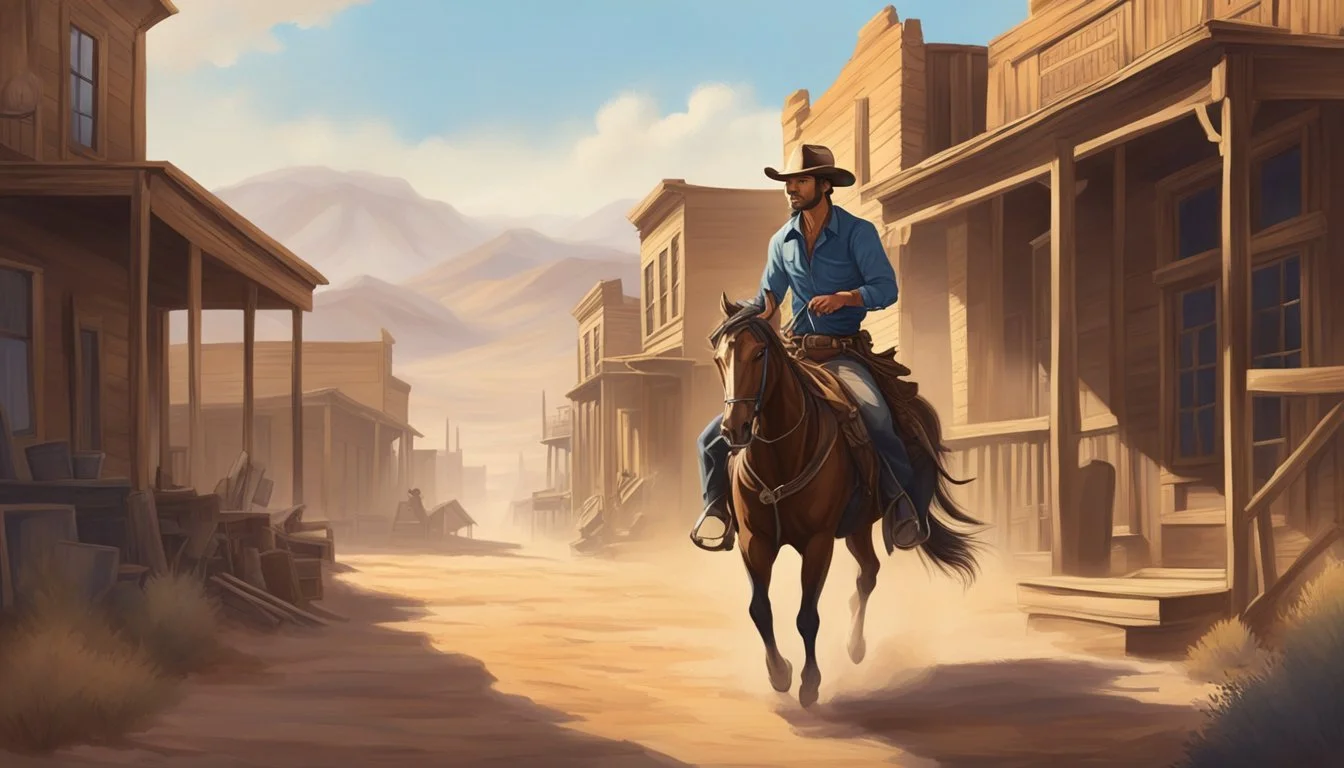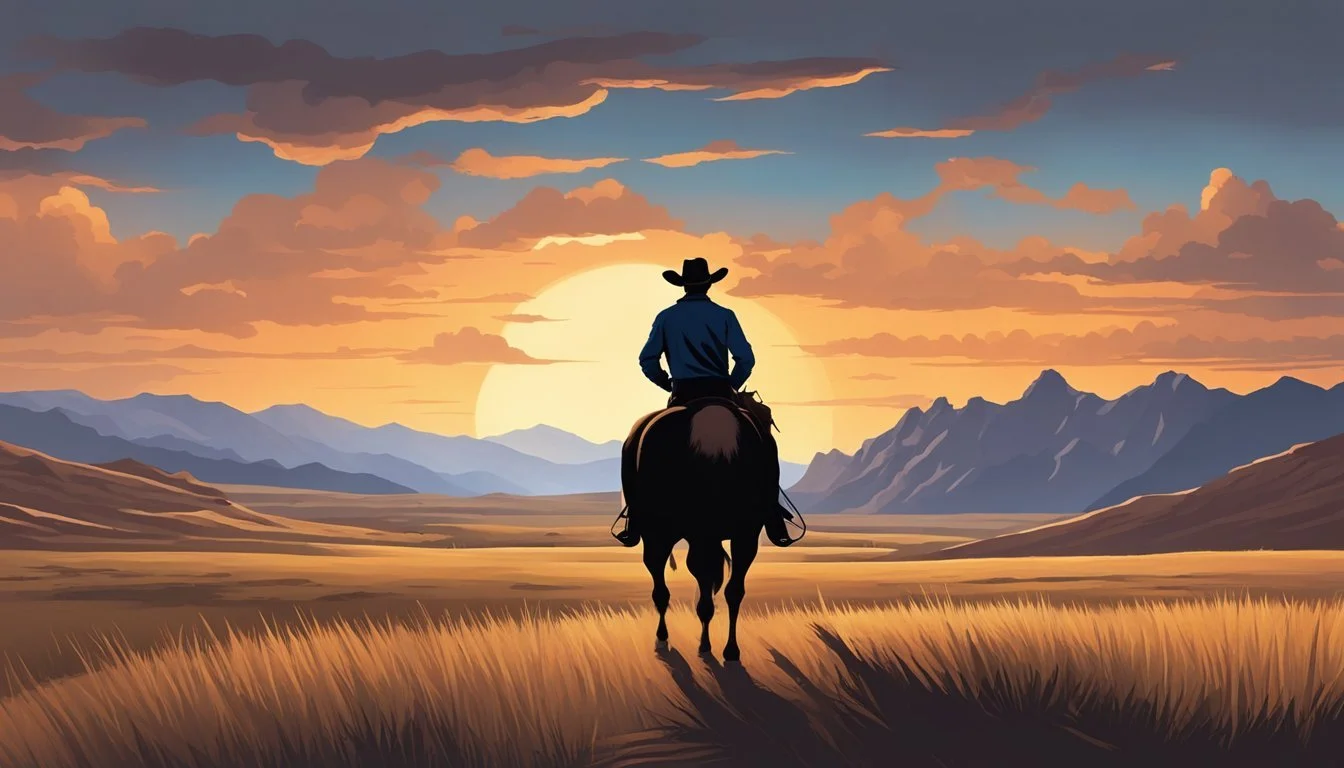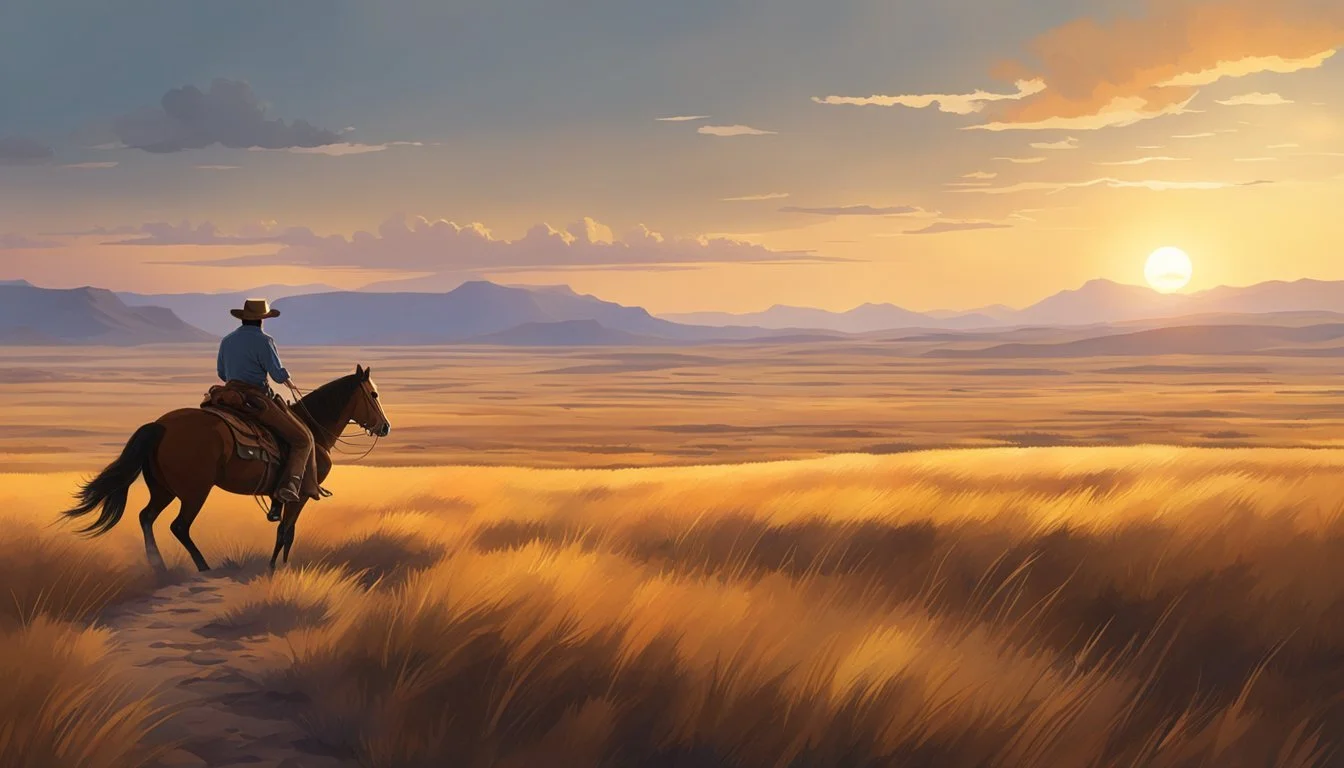The Role of the Cowboy in American Politics and Society
An Emblem of Cultural Influence
The cowboy is an enduring symbol in American culture, often seen as the quintessential American hero. This figure has played a significant role in shaping the country's political and social landscape. Rooted in the history of the American West, cowboys came to represent a lifestyle characterized by rugged individualism and a code of honor, traits that resonated with American values. As a result, they were leveraged in various ways across political ideologies to evoke a sense of nostalgia and to advance specific agendas.
In popular culture, the cowboy has been romanticized as a defender of American tradition against the changing tides of modernity and immigration. Through dime novels, Wild West shows, and numerous Hollywood films, the cowboy's image has been manipulated and mythologized. The portrayal of cowboys in these mediums contributed to an imagined America, one where the myth often took precedence over the historical reality of the cowboy's life and work.
Politically, the cowboy archetype has been utilized by figures across the spectrum to embody qualities such as independence, resilience, and integrity—attributes that politicians often aspire to project. This association with American heritage and virtue has made the cowboy an effective rhetorical tool, harnessing the powerful imagery and ideals that the figure represents. As such, the cowboy remains a potent symbol in American politics and society, continuing to influence public perception and national identity.
Historical Emergence of Cowboys
The cowboy archetype embodies a blend of Spanish vaquero traditions and the exigencies of American westward expansion. This evolution played a critical role in the settlement and development of frontier lands.
Origins and Influence of the Vaquero
The vaquero, the Spanish term for 'cowhand,' is the precursor to the American cowboy. Spanish cattle-herding techniques were imported to the New World and first took root in Mexico. Throughout the 16th and 17th centuries, indigenous peoples and Spanish settlers melded their livestock-handling traditions, which eventually diffused northward into the regions that would become the southwestern United States.
Expansion into the American West
By the 19th century, as American settlers pushed further west, encountering vast ranges ideal for cattle grazing, the need for skilled animal handlers became evident. These settlers adapted and adopted vaquero skills, melding them with their customs, leading to the emergence of the cowboy culture in the Old West. The cowboy became synonymous with the unruly and wild expanse of the American frontier.
Role in Settlement and Expansion
As the frontier expanded, cowboys were integral to the movement. Their ability to tame horses, move herds across long distances, and navigate the rugged terrain made them indispensable. They supported the needs of settlers traveling to the west while interacting and sometimes clashing with indigenous peoples, as both groups sought to utilize the same lands and resources. Cowboys contributed substantially to the development of the cattle industry, a linchpin of the American economy during this period.
Cowboys in American Mythology and Symbolism
The American cowboy stands as a powerful symbol within the country’s mythology. This figure has transformed from historical frontier workers into icons of American identity and values.
From Real-Life Figures to Legendary Icons
In the late 19th century, real cowboys managed cattle on cross-country drives, living a tough life that became romanticized over time. Two major figures stand out: Buffalo Bill and John Wayne—one a showman who started the Wild West shows, and the other an actor who embodied the cowboy persona on screen. They played pivotal roles in shifting the perception of the cowboy from a mere ranch worker to a larger-than-life hero.
The Cowboy in Literature and Dime Novels
Dime novels, a form of cheap popular literature, spread the cowboy’s fame and painted a picture of adventure and valor, far from the dusty reality. These novels used vivid imagery to craft tales of bravery that etched the cowboy as a symbol of heroism into the national psyche. Dime novels expanded the mythology around cowboys, often exaggerating their exploits for dramatic effect.
Cowboys and American Identity
The Cowboy has deeply influenced American identity, representing a mix of rugged individualism and moral integrity. This symbolic imagery hints at the self-made, defiant spirit associated with the American Dream. Interestingly, cowboys are not universally seen as benign symbols; some view them through a critical lens due to the turbulent history of westward expansion and its impact on Native American lands and people.
The Cowboy in Politics
The image of the cowboy has been an enduring symbol in American politics, often associated with values such as independence and resilience. This perception has influenced both the character and decisions of numerous political figures throughout United States history.
Cowboys as Political Figures
Politicians in the United States have historically adopted the cowboy persona as a method to resonate with the electorate. This strategy suggests alignment with characteristics attributed to cowboys: toughness, self-sufficiency, and a pioneering spirit. Numerous Presidents, including Ronald Reagan and George W. Bush, openly donned cowboy attire and were often photographed on ranches, implicitly suggesting that they possessed qualities analogous to those of the cowboy.
Influence of Cowboy Archetype on Political Leaders
The cowboy archetype has also shaped political ideologies and leadership styles, especially among Republican politicians. The embodiment of cowboy traits has been strategically used to project an image of rugged individualism and to evoke patriotic sentiments. Thomas Jefferson, although predating the cowboy era, embodied similar frontiersman values that laid the groundwork for the cowboy's resonance in later American politics. His vision of an agrarian society and emphasis on individual liberty influenced the cowboy's integration into political narrative and policy priorities, particularly concerning land and resource management.
Cowboy Culture and Influence on Society
The cowboy archetype has historically shaped not only the perception of the American West but also the social structure and economic practices within its society.
Family and Community Life
In cowboy culture, the family structure often held a foundational role in developing close-knit communities. Ranches served as both homes and business headquarters, with each member contributing to daily operations. Family values such as hard work, resilience, and interdependence were reinforced through daily ranch activities. The cowboy lifestyle also fostered a strong sense of community, with neighbors often assisting each other through communal work efforts like roundups and brandings, reinforcing the law of mutual aid.
Ranchers, Workers, and the Range Economy
Ranchers played a pivotal role as the economic anchors of the American West. They managed large swathes of range land, where cattle roamed and grazed. Workers, including cowboys, were essential in handling the livestock, with responsibilities rooted in horsemanship, cattle drives, and range management. The economy of these areas was heavily reliant on the range livestock industry, which demanded a high degree of collaboration and coordination among workers to operate efficiently. Ranching required strict adherence to law and policies to ensure fair trade and sustainable practices, thus impacting local and national markets.
Western Expansion and Conflict
The relentless march toward the western frontiers of the United States in the 19th century was marked by the blurring of legal boundaries and the complex interactions with the indigenous people and Mexicans.
Law and Outlaw in the Old West
In the expanding territories of the West, the line between lawmen and outlaws often blurred. Towns sprouted up rapidly, and with them came the need for order. Law enforcement was typically rudimentary, with sheriffs and marshals struggling to maintain control among a populace armed with the ubiquitous six-shooter. Notorious gunslingers both reinforced and challenged the notion of order, engaging in duels and robberies that contributed to the violent reputation of the frontier.
Sheriffs: Appointed or elected law enforcers of towns
Marshals: Federal law enforcers often dealing with cross-jurisdictional crimes
The presence of guns was instrumental in both escalating conflict and enforcing peace. While some gunfights were mythologized, they underscore the harsh realities of violence that marred the notion of the West as a place of freedom and opportunity.
Encounters with Indigenous Peoples and Mexicans
As settlers moved westward, they encountered diverse groups of indigenous people, whose land and way of life were often directly threatened by this expansion. Conflicts arose as treaties were ignored and territories were encroached upon. The U.S. government's policies ranged from assimilation to displacement, leading to a series of confrontations and wars. The result was a tragic and enduring impact on indigenous cultures.
Encroachments on Indigenous Lands: Led to numerous conflicts, including the Dakota War of 1862 and the Battle of the Little Bighorn in 1876.
Furthermore, Mexicans, who had extensive settlements in areas like California and Texas, found themselves navigating an uncertain landscape of shifting political control and land disputes. The conclusion of the Mexican-American War in 1848 with the Treaty of Guadalupe Hidalgo ceded vast territories to the United States, impacting the lives and legal statuses of many Mexicans who suddenly found themselves within U.S. borders.
Treaty of Guadalupe Hidalgo: Resulted in Mexico ceding nearly half its territory to the U.S., including parts that would become California, Nevada, Utah, Arizona, and New Mexico.
The Cowboy in Popular Culture and Hollywood
The influence of the cowboy in Hollywood films and its reflection on American culture cannot be overstated. They have served as symbols of rugged individualism and pioneers of the American spirit.
Cowboys as American Cinema Icons
The cowboy archetype emerged prominently in Hollywood during the early 20th century. Actors like John Wayne embodied the cowboy persona, solidifying its place in American cinema. Wayne's portrayal of cowboys in films such as "Stagecoach" (1939) and "The Searchers" (1956) projected an image of bravery and moral certitude that resonated with audiences, reflecting and shaping American values of the time. Hollywood capitalized on this, releasing numerous Westerns that placed cowboys at the center of American folklore.
Key Attributes of Cinematic Cowboys:
Symbolize American ideals of freedom and justice
Exemplify masculinity and resilience
Often depicted as heroes who conquer the untamed American West
The Lasting Image of Cowboys in Media
Cowboys continue to be a staple in media, transcending film to influence television, music, and literature. In this context, they have become synonymous with American culture and heritage. Political figures like Ronald Reagan have also drawn on the cowboy persona, utilizing its connotations of strength and unyielded spirit. Reagan's own history as an actor in Westerns before his presidency allowed him to embrace and project this image effectively.
Impact on American Culture:
Reinforced by popular culture through various media formats
Utilized in political narratives to evoke sentiments of determinism and authenticity
Served as a canvas for exploring contemporary issues within a historical setting
The portrayal of the cowboy in Hollywood and its adoption into broader media manifest as more than entertainment; it is an integral part of the American ethos.
Economic Aspects of Cowboys
Cowboys played a pivotal role in the economy of the American West, primarily through the livestock industry and their involvement in mining and natural resource exploration.
Cowboys in the Livestock Industry
In the livestock industry, cowboys were essential to the operations in ranching states. They managed cattle drives, moving livestock from ranches to rail heads. This practice was not just a part of the regional economy but significantly contributed to the national economy as well. Cowboys acted as the backbone of the ranching business, herding cattle, branding them for identification, and ensuring their health during the long drives.
Key Roles:
Herding cattle
Maintaining livestock health
Conducting long cattle drives
Branding and marking animals
Livestock was a primary business commodity in the American West, and cowboys were crucial in maintaining the flow of products to markets.
Impact of Mining and Natural Resource Exploration
The discovery of gold and silver in the American West led to mining booms, indirectly affecting the cowboy's role in society. Cowboys often found employment as ranch hands in burgeoning mining towns, where they could supply meat and leather, essential resources for miners.
Mining Boom Contributions:
Providing food (meat) to mining populations
Supplying leather for mining equipment and attire
The demand for these resources spurred further expansion into the frontier, accelerating the development of infrastructure. The relationship between cowboys and the mining industry was symbiotic, with each depending on the other for resources and labor.
Social and Geographic Diversity of Cowboys
Cowboys were not monolithic figures but represented a rich tapestry of cultural and geographic backgrounds, resulting in a variety of regional cowboy traditions within American society.
Cowboys Across Different American Regions
In the North, cowboys’ activities were shaped by the demands of the harsher climate and the cattle trail routes passing through states like Wyoming and Montana. The open ranges of New Mexico and Colorado offered a different geography, changing the nature of cattle herding and ranch work. Cowboys in these areas often encountered varying terrains from arid deserts to mountainous regions, influencing their herding techniques and lifestyle.
The cowboys of the South dealt with the dense brush and swampy areas, particularly in states like Texas, where techniques had to adapt to the unique challenges of the landscape. In contrast, the East didn't have the extensive cattle ranching culture characteristic of the West; rather, cowboy-related activities there were more tied to small-scale farms and local markets.
Cowboy Subcultures and Their Unique Contributions
New Mexico: Cowboys in New Mexico merged Native American and Spanish heritage, contributing to a distinctive style of clothing and roping techniques.
Colorado: Given its varied geography, cowboys in Colorado developed unique skills for handling cattle in mountainous terrains.
Kansas: As a central hub for cattle drives, Kansas cowboys were key players in moving vast herds towards railway heads for transport to the East.
Cowboy subcultures added a rich diversity to the fabric of American cultural identity with their unique customs, attire, and folklore. The interplay between different environments and the cowboys who worked them forged a multifaceted legacy that has permeated American politics and society.
Modern Depictions and Legacies
The cowboy remains an iconic figure in American culture, resonating in various forms of media and leaving a significant mark on society's values and politics.
Cowboys in Contemporary Media
Contemporary media often romanticizes the American cowboy as a rugged, independent hero, reinforcing the archetype that has been cultivated for over a century. In film and television, cowboys are frequently depicted as embodiments of honor and bravery, symbols of a simpler time when individualism and self-sufficiency were paramount. This portrayal extends to literature and advertising, where the imagery of cowboys continues to sell products and lifestyles, capitalizing on the allure of the so-called "wild west."
Enduring Legacy and Societal Impact
The legacy of the cowboy as an American hero is deeply embedded in national identity. It influences societal values such as liberty, justice, and the pioneering spirit. However, its impact is complex and multifaceted. While some view the cowboy as a positive symbol of American resilience and pioneering spirit, others critique this construct for oversimplifying history and marginalizing the diverse experiences of other groups in the American West. Nonetheless, the figure of the cowboy remains a powerful, albeit contested, force in shaping the political and cultural discourse.
Conclusion
The cowboy figure has long been emblematic of American culture, shaping the nation's identity both within and beyond its borders. Rooted in rugged individualism and a symbol of the pioneer spirit, the cowboy has evolved from a historical occupation into a cultural icon, imbued with the values of freedom and self-reliance.
In the realm of politics, the cowboy archetype has been leveraged by leaders seeking to tap into deeply entrenched American sentiments. The imagery of this frontier hero has been utilized to underscore a connection to traditional values and a down-to-earth approach, positioning politicians as defenders of the common people against perceived threats to their liberty and way of life.
Societally, the cowboy mythos permeates through various American narratives, from literature to cinema, reinforcing a sense of national mythology. It shapes perceptions of the American character, conjuring images of resilience and determination. However, this portrayal is not without complexity, as it also includes acknowledgment of the historical inaccuracies and the diversity of experiences within the Wild West.
As an enduring symbol, the cowboy continues to influence American self-identity and societal norms, with nuanced interpretations reflecting modern values and challenges. The legacy of the cowboy in American consciousness remains a powerful touchpoint in the ongoing discourse regarding the nation's past, present, and future.







